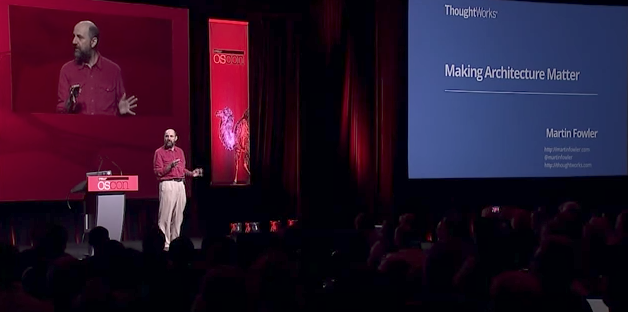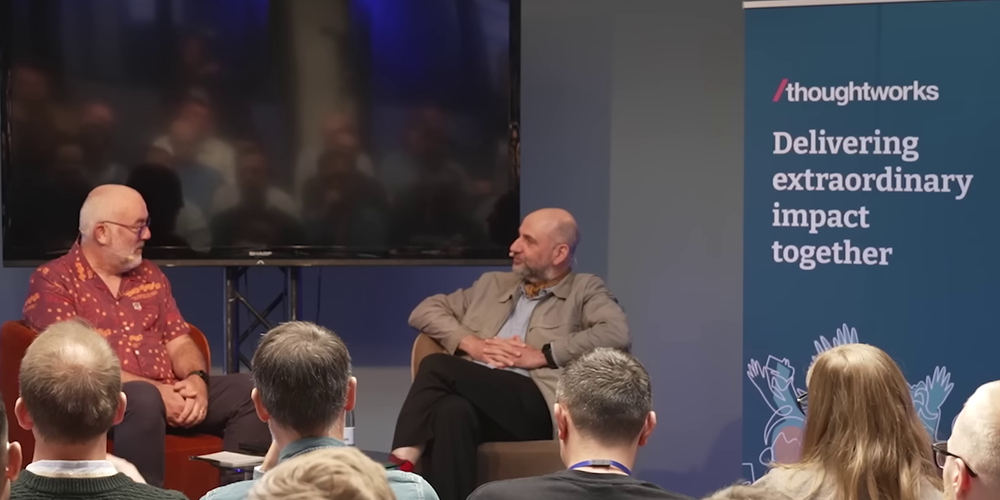A website on building software effectively
If there's a theme that runs through my work and writing on this site,
it's the interplay between the shift towards agile thinking and the
technical patterns and practices that make agile software development
practical. While specifics of technology change rapidly in our
profession, fundamental practices and patterns are more stable. So
writing about these allows me to have articles on this site that are
several years old but still as relevant as when they were written.
As software becomes more critical to modern business, software needs to
be able to react quickly to changes, allowing new features to be
conceived, developed and put into production rapidly. The techniques of
agile software development began in the 1990s
and became steadily more popular in the last decade. They focus on a
flexible approach to planning, which allows software products to change
direction as the users' needs change and as product managers learn more
about how to make their users effective. While widely accepted now, agile
approaches are not easy, requiring significant skills for a team, but more
importantly a culture of open collaboration both within the team and with a
team's partners.
This need to respond fluently to changes has an important impact upon
the architecture of a software system. The
software needs to be built in such a way that it is able to adapt to
unexpected changes in features. One of the most important ways to do this
is to write clear code, making it easy to understand what the program
is supposed to do. This code should be divided into modules which allow
developers to understand only the parts of the system they need to make a
change. This production code should be supported with automated tests that
can detect any errors made when making a change while providing examples
of how internal structures are used. Large and complex software efforts
may find the microservices architectural style
helps teams deploy software with less entangling dependencies.
Creating software that has a good architecture isn't something that can
be done first time. Like good prose, it needs regular revisions as
programmers learn more about what the product needs to do and how best to
design the product to achieve its goals. Refactoring is an essential technique to allow a
program to be changed safely. It consists of making small changes that
don't alter the observable behavior of the software. By combining lots of
small changes, developers can revise the software's structure supporting
significant modifications that weren't planned when the system was first
conceived.
Software that runs only on a developer's machine isn't providing
value to the customers of the software. Traditionally releasing software
has been a long and complicated process, one that hinders the need to
evolve software quickly. Continuous Delivery uses
automation and collaborative workflows to remove this bottleneck,
allowing teams to release software as often as the customers demand.
For Continuous Delivery to be possible, we need to build in a solid
foundation of Testing, with a range of
automated tests that can give us confidence that our changes haven't
introduced any bugs. This leads us to integrate testing into
programming, which can act to improve our architecture.
Photostream

San Francisco
Data Management
There are many kinds of software out there, the kind I'm primarily
engaged is Enterprise Applications. One of the enduring problems we
need to tackle in this world is data management. The aspects of data
managment I've focused on here are how to migrate data stores as their
applications respond to changing needs, coping with different contexts
across a large enterprise, the role of NoSQL databases, and the
broader issues of coping with data that is both Big and Messy.
Domain-Specific Languages
A common problem in complex software systems is how to capture
complicated domain logic in a way that programmers can both easily
manipulate and also easily communicate to domain experts. Domain-Specific Languages (DSLs) create a custom language
for a particular problem, either with custom parsers or by conventions
within a host language.
Books
I've written seven books on software development, including
Refactoring, Patterns of Enterprise Application Architecture, and UML
Distilled. I'm also the editor of a signature series for
Addison-Wesley that includes five jolt award winners.
My Books Page...
Conference Talks
I'm often asked to give talks at conferences, from which I've
inferred that I'm a pretty good speaker - which is ironic since I
really hate giving talks. You can form your own opinion of my talks by
watching videos of some my conference talks.
My Videos Page...
Board Games
I've long been a fan of board games, I enjoy a
game that fully occupies my mind, clearing out all the serious
thoughts for a bit, while enjoying the company of good friends. Modern
board games saw dramatic improvement in the 1990's with the rise of
Eurogames, and I expect many people would be surprised if they haven't
tried any of this new generation. I also appear regularly on Heavy Cardboard.
My Board Games page...







